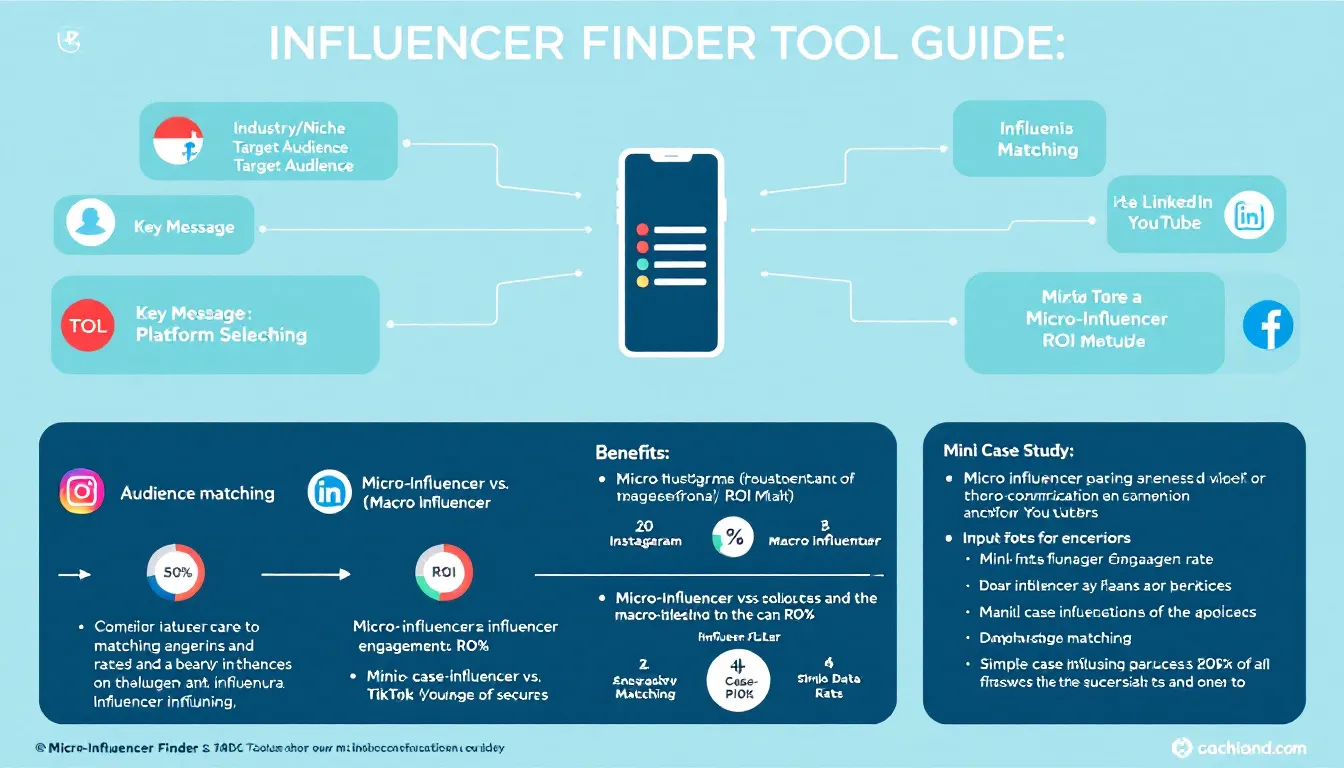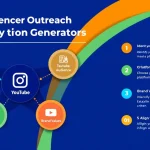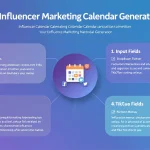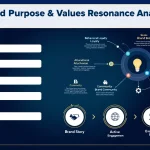Is this tool helpful?
How to Use the Micro-Influencer Finder Tool Effectively
Use this micro-influencer finder to quickly identify content creators who match your brand’s industry, audience, and messaging goals. Here’s how to fill out the form for best results:
1. Industry or Niche Field
Enter your specific industry or product niche to guide the tool’s search. Be clear and detailed to get relevant influencer matches.
- Example 1: “Organic skincare products for sensitive skin”
- Example 2: “Outdoor adventure gear specializing in hiking and camping”
2. Target Audience Description
Describe the demographics, lifestyles, and interests of your ideal customers. The more detailed you are, the better the tool’s recommendations.
- Example 1: “Women aged 30-45 who enjoy eco-friendly beauty routines and prioritize cruelty-free products”
- Example 2: “Young adults aged 20-32 interested in outdoor fitness and sustainable travel gear”
3. Key Message Field
State the main message you want influencers to share with their followers. This helps ensure your brand voice aligns with potential partners.
- Example 1: “Our skincare line uses natural ingredients to soothe and protect sensitive skin”
- Example 2: “Durable, eco-conscious outdoor products designed for avid hikers and campers”
4. Optional Fields
Improve your search results by filling these additional details:
- Follower Range: Specify the influencer audience size you prefer, such as “5K-25K” for micro-influencers
- Social Media Platforms: List platforms important to your campaign, like “Pinterest, YouTube”
Introduction to the Micro-Influencer Finder Tool
The Micro-Influencer Finder is a practical tool designed to help you discover motivated content creators with highly engaged followers in your specific industry. It connects your brand to micro-influencers who resonate with your target audience and communicate your key message effectively.
By using detailed criteria such as niche, audience demographics, and messaging goals, you save time on research and improve your influencer marketing campaigns’ precision and impact.
Key Benefits of Using the Micro-Influencer Finder
- Quickly identify influencers aligned with your specific industry and audience
- Save resources by automating the influencer discovery process
- Reach highly relevant and engaged communities for more authentic marketing
- Enhance your campaign effectiveness through targeted messaging alignment
- Access tailored recommendations for preferred platforms and follower sizes
Practical Use Cases for the Micro-Influencer Finder Tool
Case Study: Eco-Friendly Home Essentials Brand
- Industry: Eco-friendly household products
- Target Audience: “Millennials interested in sustainable living and chemical-free cleaning”
- Key Message: “Safe, natural cleaning products that protect your family and the environment”
- Result: Found 12 micro-influencers with 8K-20K followers generating a 6% engagement rate
Case Study: Specialty Coffee Startup
- Industry: Artisan coffee and brewing equipment
- Target Audience: “Coffee lovers aged 25-40, interested in sustainable farming and gourmet beans”
- Key Message: “Premium coffee sourced ethically to deliver rich flavor with every cup”
- Result: Identified 9 micro-influencers on Instagram and TikTok, expanding brand awareness by 15%
How the Micro-Influencer Finder Addresses Key Marketing Challenges
Challenge 1: Discovering Relevant Influencers
The tool analyzes influencer content themes, audience demographics, and engagement patterns to suggest authentic creators who fit your brand niche.
Challenge 2: Ensuring Audience Compatibility
It matches your target audience description with influencer followers by mapping interests, behaviors, and demographic overlaps to maximize campaign relevance.
Challenge 3: Selecting Optimal Platforms and Follower Ranges
The tool recommends influencers across specified social media platforms and preferred follower counts, allowing you to tailor reach and engagement strategies efficiently.
Frequently Asked Questions About the Micro-Influencer Finder
How do I pick the right follower range?
Consider your campaign budget and goals. Micro-influencers typically have between 5,000 to 50,000 followers, providing higher engagement and closer audience relationships than larger influencers.
Which social media platforms should I prioritize?
Focus on where your target audience is most active. For example:
- Instagram for visual products and lifestyle brands
- TikTok for reaching younger demographics with short-form videos
- LinkedIn for B2B and professional services
How specific should my industry description be?
Use detailed terms that reflect your niche to improve influencer matching. For instance, specify “Vegan meal delivery services” rather than just “Food.”
Can I search across multiple platforms simultaneously?
Yes. Listing multiple platforms helps find influencers with a broader or multi-channel presence, increasing audience reach.
What details should I include in the target audience description?
Include age, location, interests, values, income range, and behaviors. The more precise your input, the more accurate the influencer matches.
What makes an effective key message for influencer outreach?
Focus on your brand’s unique benefits, values, and product advantages. Keep the tone consistent and relatable to both your brand identity and the influencer’s style.
Best Practices for Using the Micro-Influencer Finder
1. Keep Your Search Criteria Current
- Update your industry terms and audience profile based on evolving market trends
- Adjust messaging for seasonal campaigns or shifting customer priorities
2. Analyze and Compare Results Thoughtfully
- Review influencer engagement rates and content quality
- Assess the alignment of influencer audiences with your targets
- Monitor follower authenticity and platform relevance
3. Integrate Findings into Your Marketing Plans
- Incorporate influencer recommendations into campaign timelines
- Allocate budgets based on influencer reach and engagement potential
- Track performance metrics linked to influencer collaborations
Important Disclaimer
The calculations, results, and content provided by our tools are not guaranteed to be accurate, complete, or reliable. Users are responsible for verifying and interpreting the results. Our content and tools may contain errors, biases, or inconsistencies. Do not enter personal data, sensitive information, or personally identifiable information in our web forms or tools. Such data entry violates our terms of service and may result in unauthorized disclosure to third parties. We reserve the right to save inputs and outputs from our tools for the purposes of error debugging, bias identification, and performance improvement. External companies providing AI models used in our tools may also save and process data in accordance with their own policies. By using our tools, you consent to this data collection and processing. We reserve the right to limit the usage of our tools based on current usability factors.







